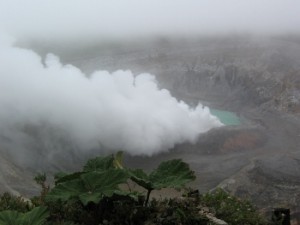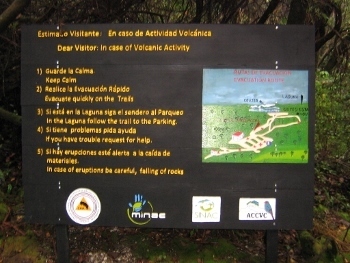Rachel Neumeier's Blog, page 403
June 5, 2013
Recent Reading: Mostly Höst
So, Books I Read In Costa Rica!
I’m not going to discuss them all in exhaustive detail, because they kind of stacked up. I’ll just say that, for me, Martha Wells’ EMILIE AND THE HOLLOW WORLD didn’t really work. Emilie didn’t seem to have much of a personality, and the story just didn’t grab me. I think my expectations may have been too high because I really loved almost every other one of Wells’ books, and even when I didn’t really love one (CITY OF BONES), I thought it was really well-written. But for me, EMILIE was just kind of a meh kind of book. I think I would have liked it fine if I were about thirteen, but I’m glad it wasn’t the first book I ever read by Wells. Which, you know, if it WAS the first book you ever read by Wells, please go read one of her others!
On the other hand, I really liked the second SHADOW UNIT book, the shared-world thing written by Emma Bull, Elizabeth Bear and Kyle Cassidy. I didn’t have internet access at the time I finished the second volume or I’d have immediately picked up the third and fourth and gone on with the series. (I got the third one as soon as I hit the Dallas airport and regained access to Amazon.) Since I couldn’t do that at the time, I looked over the other books on my Kindle and decided the try the Medair duology by Andrea Höst – THE SILENCE OF MEDAIR and THE VOICE OF THE LOST.
I really loved them! Such a relief when your second book by a still-new-to-you author is not a let-down from the first. I can see that Medair duology might not be for everyone – I’m curious now that I’ve read them, and need to go look them up on Goodreads. The main character is very introspective, and the main conflict in the story is her internal conflict (don’t get me wrong, there is plenty of stuff happening, but imo this is a novel that is driven by the protagonist’s internal conflict, not by external events). I can see that some readers might not be happy with this.
But. My God, the backstory is SO COOL. And the internal dilemma is generated directly from that backstory, and OF COURSE the protagonist is conflicted and introspective; given her history, she has to be! This duology is really a lesson on how to do internal conflict and introspection just right, so that the story is truly compelling.
See, five hundred years ago, the Ibisians fled their land (which was being destroyed by rogue magic) and invaded the Farrakian Empire. Because of their superior magic, they just swept through, rolling the native people up almost effortlessly. So Medair rode off on a quest to find the Horn of Farak, a mythical item reputed to allow a single person to defeat any army. And she found it. But when she returned, five hundred years had passed, and the war was long since over, and the two peoples had mingled (even though most political power is still held by people with mainly Ibisian blood), and there was no legitimate enemy left to destroy.
That’s the backstory. Höst really does a great job showing the complicated way two different peoples can interact and how the edges between Us and Them can blur. I mean, five hundred years is a long time, and Höst really makes you feel that. And poor Medair! Who lingered just a night too long outside of normal time and came back five hundred years too late to save the day. For her, the war was just yesterday, and yet she knows it’s wrong to blame the descendants of her peoples’ conquerors for a conquest which is long, long over and can’t be undone.
And then things happen. Anybody can see that Medair is going to be required to use the Horn of Farak eventually, on behalf of the very people she can’t help but still think of as enemies. That’s not astonishing at all. We have the nice smooth unrolling of a fairly predictable plot – though in a story well-enough written that we don’t necessarily mind its predictability – and then WHOA, DIDN’T SEE THAT COMING.
I shouldn’t have been so surprised, I guess, after AND ALL THE STARS. Höst took me by surprise several times in that one, too. But, yeah, totally didn’t expect that one major plot twist, so the whole back half of the story worked out in a way I hadn’t predicted.
This is a really good duology, with excellent writing and characterization. The story wouldn’t have worked at all if the characterization hadn’t been top-notch, because the strong romance subplot would have turned into an angst-filled cliché-ridden mess. But with great writing and strong characterization, it works just fine. The romance is actually critical to making the story work – Medair’s personal conflict would not have been nearly so sharp without it – and again, though we can see that romance coming a mile away, it’s handled extremely well and with a decided twist at the end.
So, after that, I was finally willing to try Höst’s Touchstone trilogy. I’d kind of hesitated to pick it up because the back cover copy didn’t make it sound all that appealing. I’m kind of more into fantasy than SF these days, and this is a portal SF story. Here’s the description:
——
On her last day of high school, Cassandra Devlin walked out of exams and into a forest. Surrounded by the wrong sort of trees, and animals never featured in any nature documentary, Cass is only sure of one thing: alone, she will be lucky to survive.
The sprawl of abandoned blockish buildings Cass discovers offers her only more puzzles. Where are the people? What is the intoxicating mist which drifts off the buildings in the moonlight? And why does she feel like she’s being watched?
Increasingly unnerved, Cass is overjoyed at the arrival of the formidable Setari. Whisked to a world as technologically advanced as the first was primitive, where nanotech computers are grown inside people’s skulls, and few have any interest in venturing outside the enormous whitestone cities, Cass finds herself processed as a ‘stray’, a refugee displaced by the gates torn between worlds. Struggling with an unfamiliar language and culture, she must adapt to virtual classrooms, friends who can teleport, and the ingrained attitude that strays are backward and slow.
Can Cass ever find her way home? And after the people of her new world discover her unexpected value, will they be willing to let her leave?
——
Plus, this story is written in a diary format, which is not one I always appreciate. But . . . Höst hadn’t let me down yet, right? So I opened up the first book (STRAY) and started reading.
It’s completely different from the Medair Duology: first person instead of third, SF instead of F, a diary format instead of a straightforward narrative, a contemporary protagonist instead of a straight secondary world type of story. And it is SO GOOD.
Cassandra has a very strong, appealing contemporary voice in an amazingly believable SF world that is complicated yet clearly drawn; her situation is tense and believable; and the narrative tension is maintained despite the diary format. Höst manages that format very well – it can be tricky, because the person writing the diary must have lived through the crisis being described, right? If you want to know how to create and maintain tension despite that drawback, well, read this book! We never forget it’s a diary, but we certainly wind up holding our breath over and over, through one crisis after another.
Still, despite all the crises, there’s a lot of ordinary life in this story, too. In this trilogy, unlike the Medair duology or AND ALL THE STARS, I could see that some readers might have trouble with the pacing. Cassandra’s diary doesn’t cover every single day she lives through, but we do get a lot of details about her life and about the world she finds herself in and about the “psychic space ninjas” and everyone, and there is a day-by-day feel to the story. Think of Tolkien, and the way we got at least a glimpse of every day that passed. There’s nothing like, “And so, after two years of training, I finally learned how to blah blah blah” in this book, either. None of that “time has passed” stuff. I bet some readers probably feel like the pace is too slow.
Emphatically not me, though. I loved the unhurried way the story unfolded, with plenty of time given to Cassandra’s slow integration into her new society. That is exactly why the society felt so real. Without that level of detail, I think it would be impossible to capture that feeling.
Plus, Cassandra is just a great character. This is not the kind of story where Cassandra gets transported to a new world and finds herself with Awesome Kickass Super Powers and singlehandedly saves the universe from Evil while every eligible male character falls in love with her. I mean, Cassandra kind of does have Awesome Super Powers, but she is so not a kickass heroine. She is not at all a natural fighter, plus those are definitely not the super powers she would necessarily have chosen, plus those powers comes with a pretty high cost. Plus, the society she finds herself in is really complicated, and not just in good ways, and as you might imagine, having a computer interface in your head comes with certain privacy concerns. So does being really famous in a highly connected society – Höst really deals with issues of celebrity and privacy in this story, in ways that I’m not sure I’ve ever seen in SFF before.
And Höst also manages something tricky: she doesn’t include a universal translator (well, sort of, but not really) and so Cassandra has real trouble with the language. And so she speaks with a very contemporary fluent voice while writing in English in her diary, but with a very broken phrasing when speaking in her new language. And since time passes over the trilogy, her fluency improves, until by the end her spoken language skills are much better, though still not perfect. I was really impressed by how Höst handled that gradual smoothing of Cassandra’s language skills over time.
Okay, one more comment: There certainly is a romance in this story, but it is very believable and slow. The first time Cassandra sees the man she will eventually fall in love with, she barely notices him — so different from the insta-attractions we see all over in YA today. Harking back to recent posts and comments about romances and relationships, let me add that this romance winds up with a long engagement and then marriage and a solid married relationship. Plus, there are important parent-child and sibling relationships that are very well drawn. To get all of this, you should definitely pick up the “Gratuitous Epilogue” once you’ve read the trilogy; it’s a separate short novel that lets the reader see all the various relationship stuff work out.
So this makes six books by Höst I’ve read now – six and a half, counting the “Epilogue” – and she hadn’t let me down yet. I was very pleased to buy the other three she has available. Many thanks to The Book Smugglers and Heidi of Bunbury in the Stacks, who brought Andrea Höst to my attention, because I would never have looked at a self-pubbed-only author if not for their reviews, and Höst is now on my auto-buy list.

June 4, 2013
Costa Rica
So, San Jose is a pretty big city in a central valley completely surrounded by volcanoes. You might have known already how very very very volcanic Central America is, but I really didn’t. If I ever learned how Central America formed, I had forgotten.
Of course I have every intention of reading about Costa Rican history — including things like geology — before going on the trip, but I didn’t actually get to it somehow. I will blame the need to thin the fruit on the fruit trees and all that kind of thing, but I admit that possibly I also spent time reading fiction instead of history. And then I had no internet access most of the time in Costa Rica and couldn’t just look things up whenever I had the impulse, which was annoying. It is certainly easy to get used to modern conveniences!
The tour director obviously was prepared for complete tourist ignorance and spent lots of time talking about history, including geology — she made it really interesting, in fact.
I knew (because of SM Stirling’s IN THE SEA OF TIME) that William Walker was a guy who tried to carve out a chunk of South America as his own private kingdom, but actually that turns out to have been Central America, including Costa Rica, which I hadn’t known. They fought him off. A very dramatic episode, I can see why Stirling stole Walker from history and used him in his book, though possibly using a character with that exact name was, um, less than subtle.
So, anyway, lots of volcanoes.
Lots of the volcanoes are active, too, and you can see plumes of smoke or steam or whatever rising off them, like here at Poas Volcano, which we walked up the slope of and looked down into:
Caravan is very into tourist safety, as you might imagine, with a Be Careful Lest You Stub Your Toe On Uneven Pavement sort of attitude. I expect the whole country is into tourist safety in a big way, as tourism is, I think, something like the third-most-important component of the country’s economy. This results in a tendency to put up signs like this the one below:
Can you read that? It’s all: In Case of Eruption, Stay Calm. Very entertaining.
In fact, it was hard to tell what was really dangerous and what was all about keeping tourists from stubbing their toes. We got these warnings about don’t-trip-over-this-rough-pavement and you could NOT get off a bus or onto a boat without the tour guide taking your hand to make sure you didn’t fall on your face or into the river. Which was actually kind of useful sometimes, as sometimes I was carrying enough stuff that an extra hand was a good thing, but it was still funny.
My favorite volcano of the trip was Aranel, a real volcano’s volcano, the classic conical shape and plumes of steam rising from its higher crater. It’s also the third most active volcano in the world, if I remember accurately the description given by our guide. Here’s Aranel:
Oh, wait, no, here it is!
For a big volcano, Aranel was amazingly invisible whenever it rained, or whenever clouds and mist just closed in around it even if it wasn’t raining. We were lucky enough to see a lot of it, but unfortunately it was never clear enough after dark to see the famous orange glow around the top.
Costa Rica doesn’t just have volcanoes, it also has exciting wildlife! We saw this particular crocodile about one minute after starting down the river toward Tortuguero.
Costa Rican crocodiles are nothing like as big and dangerous as the monsters of the Nile, but they’re big enough. There are caiman, too, but those are smaller and basically pretty harmless, though I don’t know if I’d personally dabble my toes in a river that was home to a lot of caiman.
Tortuguero was my favorite place, I think. Kind of rustic accommodations, no air conditioning, but it was actually cool enough at night for that to be okay. And beautifully landscaped, though tropical plants look highly artificial to an eye trained in the temperate zone. I kept waking up at about four thirty, (because of the time difference that meant I was just waking up at my normal time.) So every place we stayed, I’d read until dawn and then wander around and look at flowers and birds. I really liked the kiskedee flycatchers, because they were everywhere, and pretty, and I learned to recognize their song, which made me feel more at home in the mornings.
Of course, like everyone else, I most wanted to see monkeys – I mean, there was basically no possibility of seeing a jaguar, and not much chance of seeing a quetzal, so after those two, I really wanted to see monkeys. Costa Rica has four species. Of those, squirrel monkeys are ultra-cute but rare and we didn’t see those, but we did see lots of capuchins and howler monkeys, plus even spider monkeys twice, which was exciting, because spider monkeys are not nearly as common as capuchins or howlers.
Capuchins are cuter and howlers are more impressive, but spider monkeys have a more interesting social organization than either. I’m sure you’ll be interested to know that spider monkeys have a “fission-fusion” system, where a larger permanent association of animals breaks up every day into highly variable sub-groups and then comes back together. Other than in spider monkeys, you get that kind of system only in chimps, bonobos, and some kinds of dolphins (as far as I can remember, anyway). In order to get that kind of system, you need scattered and patchy food resources, plus mobility, plus a general lack of serious predation – conditions which are fairly rare for mammals. Plus, spider monkeys are one of the few mammal species which show female dominance, always interesting – that implies that that food resources are not so abundant that females can afford to give way to males and still successfully reproduce.
I was mostly interesting in seeing the animals and birds and the general scenery, but the towns were interesting, too. Here’s the tiny Catholic church in the village of Tortuguero.
Isn’t that attractive? And the Costa Ricans are very good at landscaping everything that is the least big special, like even little bitty churches. I love those palms or whatever they are, which really do have bright red sections of trunk. I also took a picture of the inside of the church. The attractive design and pretty tile floor is characteristic of most every building we saw in Costa Rica – we saw few wooden buildings and even fewer carpets, I’m sure because of the humidity, but lots of lovely stone tile.
We traveled around a good bit and toured various plantations on the way from here to there. My favorite of the tours was of the Britt coffee plantation, even though I don’t like coffee (hilarious presentation!). Besides, they also make chocolate. My favorite was a dark-chocolate candy with guava-paste centers, not a combination I’d ever have thought of, but I bought a bag plus some tiny 1-oz samples to give away.
You know the way to a Costa Rican’s heart, btw? Establish a new tropical crop in their country! They will fling themselves into production with vast enthusiasm and make you almost a national hero. We heard all about the people who established bananas and coffee and pineapples and so forth. Not only was this all interesting (it really was), the whole forward-looking enthusiasm for new crops and new industry gives the whole country this great optimistic feeling. I honestly felt like all the tour guides and basically everyone in Costa Rica expects a bright future for their country. With an attitude like that, they may well build one. My personal vote for the next crop to try establishing: macadamias. As far as I know, no one has tried macadamias in Costa Rica, but if they can grow ‘em in Hawaii, why not Central America? And it’s plain the people of Costa Rica work very hard to make their crops a success. If I had an extra ten million dollars sitting around gathering dust, I might invest in that kind of venture, but alas, someone else will have to think of it.
Between tours and travel, we got to stay both on the Caribbean coast AND on the Pacific coast. Here’s my favorite part of the whole trip:
Those of us from landlocked states really find those oceans fun to play in. This beach had some volcanic rock, not fun to accidentally step on, but mostly it was sand and I enjoyed playing in the waves even though there was a huge and very attractive pool. And collected a few small volcanic rocks to take home, because hey, rocks! If I put them on a shelf with my extra 2000-colones bill (about 4 dollars), I’ll remember where they came from and why they’re special.
So that was Costa Rica! I’m leaving tons out, of course, but I did get some great photos even with my cheapo camera, and I’m sure various people will email me a selection of the pictures they took, too.
I’ve been in the tropics before – Kenya while I was in college, and I did research in Venezuela one summer – I was watching bearded sakis, which was a) fun in some ways, but, more importantly, b) a useful demonstration that I was never going to like research enough to make it my life. I mean, if you don’t truly love doing a behavioral study on monkeys in the tropics, you are probably never going to love doing behavioral research period. So I went in a different direction with my life.
Anyway, this was my first trip just for fun, and I thoroughly enjoyed it. Though I missed my girls! Maybe for my next vacation – preferably in fewer than twenty years – I will google Amazing Vacations For You And Your Dog, and take a couple of them with me!

June 3, 2013
I’m back!
Hi, all!
Costa Rica was beautiful and I will definitely be posting about it in a day or so. The trip was a packaged tour with my cousins Greg and Janet and their mother, Beth, and Janet’s husband, Larry. It was great hanging out with them all; I’d only ever met Greg and Beth once or twice, and I never had met Janet before (I have tons of cousins, but none that live in the same state I do.)
I also turned out to really enjoy the “packaged tour” setup, where the tour director took care of everything and there was nothing at all to worry about. The tour director was wonderful and knew everything about Costa Rica and totally kept everything perfectly on schedule, and the whole experience was almost completely stress-free and seamless (there’s always some stress about connecting flights, that can’t be helped, but in the event all the air travel worked out just fine, too). There was one guy on the tour who I started referring to as Complaining Dude halfway through, but it’s almost inevitable you’ll get one guy like that on a trip, I suppose, and it was sort of fun to be snarky about him, anyway.
The tour was well-designed, with visits to both the Caribbean coast and the Pacific coast, plus various volcanoes, many producing plumes of smoke — I really didn’t know how volcanically active Costa Rica is till this trip! This was a Caravan tour, btw, in case you’re curious.
Of course, if you’re going to drive around a country and see different sites, then you’re going to be on a bus a good bit of the time. I was endlessly grateful that I can read on a bus, even on the bumpiest roads. I got my Kindle specifically for this trip, and what with airports and buses (and waking up VERY EARLY every morning) wound up reading eight books:
Emilie and the Hollow World, by Martha Wells
Shadow Unit 2, by Emma Bull et al
The Medair duology, by Andrea Höst
The Touchstone trilogy, also by Andrea Höst
and, in bits around the novels, Writing Down the Dragon, a nonfiction analysis of Tolkein, by Tom Simon
And I will post about all of those later, too. I will say briefly that I was disappointed with Emilie, pleased with the second Shadow Unit collection, and very happy with everything by Höst. I’m going to go get everything else she’s ever written, next. I’m not even going to bother reading the descriptions; just buy ‘em all. There, done — there were three on Amazon that I didn’t have. Now I do, with the touch of a button. Poof! The Kindle is a wonderful thing.

May 23, 2013
Just a quick note –
That I will be out of town until June 3rd.
I’m going to Costa Rica with several assorted relatives, and I’m not taking my laptop. So, not sure I will have internet access till I get home!
I can barely stand to leave my dogs, and you know the magnificent Alba rose is going to bloom in just a few days, and . . . and . . . well, somehow I will manage to enjoy myself!
See you!

Pure Romances, YA and otherwise
So, I was thinking some more about romance in SFF – about “pure” romances, where the romance is the point of the story.
I completely agree with a recent commenter that the romance in THE SCORPIO RACES (by, as I’m sure you know, Maggie Stiefvater) was really well handled. The reason it worked for me – and everything about this book worked for me – was because both Sean Kendrick and Puck Connelly were really focused on something other than the romance – on the Scorpio Races, in fact; and on getting other super-important aspects of their lives to work out. The romance in this story was more something that was waiting for later. You can see that it may well work out for Sean and Puck, in a nebulous ever-after that takes place after the book itself is over.
What worked particularly well for me was how both protagonists were so focused on getting other things in order that they really did not spend any emotional time at all dwelling on each other’s hotness and pining after each other and being all obsessive about their budding relationship. In other words, Stiefvater wrote them as complicated protagonists with real problems, and the romance was only tangentally one of those problems and definitely not the ultimate focus for either protagonist.
How about “pure” romances, where the romance is a central feature of the plot?
Oddly enough, considering how little contemporary YA I read, it’s contemporary titles that come to mind when I think about romances that really worked for me. Like, THE SKY IS EVERYWHERE by Jandy Nelson, which instantly became one of my top-ten favorite books of all time when I read it – was that just last year? Imagine, a contemporary YA winning a slot on my all-time-favorites list! Who would have expected that, right? And the whole story is about romance. Like this: Nothing has been like this, nothing has made me feel like I do right now walking up the hill to Joe’s, like I have a window in my chest where sunlight is pouring in.
Except the book really isn’t about romance – not really. It’s about grief and recovery. (Despite this, the story isn’t a downer. It’s really not. You should go read it! Seriously!) So maybe, given that the romance could be seen as central but isn’t really, this book isn’t a fair example?
So contrast that with, say, CATALOG OF THE UNIVERSE by Margaret Mahy. The romance isn’t the only thing going on in this little gem of a novel – we also have the standard theme (for YA) of figuring out who you are. But the romance is certainly more central to this one than to Stiefvater’s book. And CATALOG is completely charming all the way through, beautifully written with humor and life infusing every page.
But then, how about “pure” romance, if there is such a thing? Are there any that really and truly work for me? Of course there are. And here I find myself switching back to adult titles. For example, THE CHOCOLATE THIEF by Florand. This is a straight contemporary romance, and very charming it is; light and quick, a story you’re clearly not supposed to take too seriously, yet with (behind the humor) one or two serious themes. Plus, mmm, chocolate!
Or, speaking of charming, how about Sarah Addison Allen? Her novels may be adult rather than YA – though some protagonists are certainly YA protagonists. Certainly the themes – of finding one’s place in the world, of coming to terms with family – are very YA themes. And one thing we can expect from Allen is one (or more) romance that develops into a satisfying, mature relationship. It’s remarkable how much she can do in such a short novel, and how she can handle a quite complicated cast without getting lost. Really, she’s a writer to study. But you won’t be studying technique the first time your read one of her novels; no. You’ll just be enjoying the working out of the relationships.
We get that kind of healthy, mature relationship relatively rarely in SFF, it seems. I believe a commenter recently mentioned The Sharing Knife series by Bujold in this context. Because we may have Giant! Flying! Bats! and various other things to deal with, but the point of the whole story is the romance, which matures into a solid marriage. It is such a delightful series if you are pleased by watching a relationship work out and don’t necessarily need nonstop action. For me it is SUCH a comfort read, possibly my number-one series to reach for when I don’t want to start a new book and just want something to wrap myself up in and enjoy.
So there’s a short list of the kind of romance novels that really do work for me – romances that are amazingly angst-free and often build, or might be expected to build into the kind of relationship in which some normal, sane person might really want to be.

May 21, 2013
Great Low-Key Non-Angsty Romantic Relationships –
You know, I should probably add that despite my recent post, I have nothing at all against a well-handled romance in a SFF novel. I like to have other things going on in addition to the romance, but a secondary romantic thread is a pleasure to read.
Take Maskelle in Martha Wells’ WHEEL OF THE INFINITE. Maskelle develops a fine relationship with Rian in that novel, without the least hint of angst, because she’s old enough to know what she wants and, though he’s younger than she is, so is Rian. There’s no fumbling around with how to do a relationship in this story – in fact, it’s hard to think of any other relationship in any book that works more smoothly from the very beginning than this one. This particular romance is a satisfying thread through the story, but it’s hard to even call it a sub-plot because the relationship really works itself out too easily to be a sub-plot.
We get almost the same kind of satisfyingly smooth relationship in Gillian Bradshaw’s ISLAND OF GHOSTS, one of my all-time favorite books. It’s not like the relationship between Ariantes and Pervica is problem-free, actually, because first there’s the culture clash what with him being a Sarmatian (a steppe nomad) and her being British and a Roman subject. And then there’s the little problem with the druids and stuff. And, sure, Pervica very reasonably wonders whether she can possibly match the (deceased) “golden princess” of Ariantes’ previous life. But the thing is, Ariantes doesn’t wonder about that. He falls for Pervica and sets out win her, and he does, and they suit each other perfectly, and you can definitely see the happily-ever-after coming for them, and it’s all, as I say, very satisfying.
Or how about the romance threaded through THE CURSE OF CHALION by Lois McMaster Bujold? I don’t mean the dashing rescue of Iselle by Bergon of course, though that was fine in its way; I mean the romance that was much more integral to the main story, the wistful gazing-from-afar thing where Cazaril slowly falls for Betriz but thinks he is too old for her, and then you get the maybe-they’ll-work-out, maybe-they-won’t thing through the whole story. Of course Caz feels older than he really is, and Betriz is not so very young, and they are actually a fine match. If you’ve read this book, then you know there is so much else going on in this story – this romance is just a thread! But this book wouldn’t have been the same without that lovely slow-motion romance.
Sometimes we get to see more than a romance developing, too. Sometimes we get to watch a romantic relationship first develop and then settle into a wonderful marriage. I’m thinking here of the Benjamin January series by Barbara Hambly – my favorite mystery series ever, set in 1830s New Orleans (The first book is A FREE MAN OF COLOR). Benjamin meets Rose early in the series, falls for her, courts her, and eventually marries her and then they go on with married life. You can just do a lot, with no need to rush things, when you’re writing a long-running series.
Though sometimes there’s no need to watch a romantic relationship slowly develop. Sometimes it’s already established when the story opens – as in, for example, THOSE WHO HUNT THE NIGHT, a truly outstanding paranormal-ish novel, also by Hambly. Of course the vampire, Simon Ysidro, is a great character. Of course he is. A bit scary, true; he is definitely not the sparkly sort of vampire. But what makes the book is the relationship between James Asher and his wife Lydia. Asher is a linguist and he used to be a spy, and Lydia is actually a medical doctor – pretty unusual in the gas-lamp era. Both are extremely well drawn. It’s hard to think of another writer who delivers truly excellent characterization more consistently than Hambly.
And what I want to point out here is that in every one of these romantic relationships, the people involved are mature adults. One of these days, I need to think about YA relationships a bit more and figure out why some YA romances annoy me while others draw me right in or are even genuinely moving, but one thing is, I think, already clear: Whether the reader is being drawn along while the protagonist begins a new relationship or is coming into a story where the relationship is already well-established, it’s probably just hard for a YA protagonist to match the confidence and self-assurance of an adult protagonist. And, for me, that kind of romantic confidence and self-assurance are often very satisfying.

May 19, 2013
Relationships in SFF
Basically the truth is, in fantasy, I can take or leave romance, whereas I’m nearly always caught when the primary relationship is not a romantic one.
I think that’s because romances are EVERYWHERE, and too often either:
1. The protagonist is female, and her love interest is an ubër-male, who is described in very over-the-top terms (he is SO HOT, he is SO BEAUTIFUL, he is THE PERFECT IDEAL OF MASCULINITY. All the way through the story, the protagonist swoons over his chiseled features and well-defined abs – even in the midst of a life-and-death struggle. Which the good guys will win, naturally, due to the ubër-man’s extraordinary fighting skills. Plus he is probably rich and has amazing fashion sense.
All this masculine perfection gets tiresome, frankly. Honestly, I would prefer less physical perfection, or at least fewer perfect dudes who are also millionaires. As though the only guy worth falling for has to look like Fabio and have a private fortune that dwarfs the GDP of the typical small country.
Or, if there is no ubër-man, the romance is –
2. Filled with angst and misunderstanding because the people involved won’t TALK to each other. That is even more tiresome, just because I have a low tolerance for angst.
And a correspondingly low tolerance for romance in a novel when both (1) and (2) apply.
Whereas if the (or a) primary relationship in the story is not a romantic relationship, well, that right there is unusual and interesting. It also calls for more thought from the author, right? Can’t fall into the standard romance tropes, so we have to actually think about the way people actually interact with one another. I think that leads to better writing — or maybe it’s more that better writers are usually the ones who think of emphasizing this kind of relationship.
So I thought I would put together a brief list – a starter kit, as it were – of stories where a very important (or the most important) relationship in a story is not a romantic relationship.
Starting, unusually for me, with a TV show: Veronica Mars. Because the relationship between Veronica and her father, Keith, is one of the best father-daughter relationships I know of in fiction. Plus, snappy dialogue! Now that the movie is funded – it was just about the first Kickstarter project I donated to – I guess I should watch the second season. But I really did enjoy the first season, and the relationship between Veronica and her father is a big reason why.
On the subject of parent-child relationships, I recently mentioned Anne Bishop’s Black Jewel’s trilogy as a work that I can easily pick up and put down. That’s true now, and I think this trilogy has some pretty serious flaws, but the first time I read it, it was a real page-turner for me, and this was mostly due not to the big stuff going on in the plot, but to the relationships working themselves out over the course of the series. In fact, there are a lot of things I like about this trilogy, and one of them is the interaction between Saetan and the child Jaenelle. And, for that matter, between Saetan and his two adult sons, too.
There are definitely some excellent parent-child relationships in SFF even when the relationship is not one of blood. How about the relationship between Moon and Stone in Martha Wells’ Raksura trilogy? I love the way Wells handled that. And, in fact, I loved the way she handled the relationship between Moon and his actual mother in the third book, even though we hardly see the mother.
Another example is the relationship between John and Narses in Gillian Bradshaw’s historical novel THE BEARKEEPER’S DAUGHTER, which is also unique because Narses is an eunuch — but he’s still definitely a father-figure for John. Narses is a fabulous secondary character, but in fact John also has a complex relationship with his mother, Theodora. (That’s Theodora as in, Justinian and Theodora, if you know about that bit of history.) And Bradshaw did it again with CLEOPATRA’S HEIR, when she gave her primary attention to the relationship between Caesarion (Julius Caesar’s son by Cleopatra, if you’re familiar with that bit of history) and the Egyptian merchant Ani. These are both great books, particularly the latter.
Another somewhat unusual example of a parent-child relationship is the one between Captain Laurence and Temeraire in Naomi Novik’s excellent book, TEMERAIRE. Sure, Temeraire is a dragon, but still. And this is certainly the central relationship in the story!
Beyond parent-child relationships, a couple of great sibling relationships come to mind. As in, for example, Sarah Rees Brennen’s THE DEMON’S LEXICON – there may be romance going on around the edges, but the primary relationship is certainly the one between Nick and his brother Alan.
And the relationship between Locke and Jean in THE LIES OF LOCKE LAMORA by Scott Lynch, and even more so in the sequel, RED SEAS UNDER RED SKIES. There’s another strong brother-brother relationship, though of course the “brothers” aren’t really related. The second book ended on a pretty intense cliffhanger, but I hear the third book is coming out this year, so we will hopefully find our protagonists getting out of the corner they were thoroughly painted into in the second book.
Okay, with that, I’m running low. Anybody else got a title or two to add to this list? I’d personally appreciate some suggestions for great books that emphasize character and relationships, but are light on romance – I think I overdosed on angsty romance this month!

May 18, 2013
A really, really, really complete list of SFF subgenres –
Over here.
It’s interesting. It’s also specifically meant as a marketing device to help people find books that would appeal to them. But — I wonder — I like sorting and categorizing stuff because I’m that kind of person, so I like lists of subgenres just as lists. But for marketing?
I would not normally click on “ghosts” to search for a story about ghosts, because I am not specifically interested in ghosts stories. Yet, if I read a great review about a story with ghosts at a book blogger’s site — Fantasy Book Café, or The Book Smugglers, or Bunbury in the Stacks, or wherever — then I would be interested in THAT ghost story.
Speaking of which, remember that the sequel to A CERTAIN SLANT OF LIGHT is coming out any time! I can’t wait!
But back to the idea of subgenres — I would never, ever have found out about A CERTAIN SLANT because I was searching for a particular fantasy subgenre. As a marketing device . . . I think that is beyond limited, and into self-defeating.
But the list is still interesting for its own sake.
Though I notice that grimdark is not on there. I really do feel that is a separate, distinct category — not the same as dark fantasy. So it’s not really completely complete.

When a book description backfires –
I mean, this book review is meant to sound intriguing and inviting and I think the writer of the review expects to hook your interest and get you to add it to your Must Check It Out List. But, just, no. The book is THE WOMAN UPSTAIRS by Claire Messud. The review is fascinating, in kind of the same way that a train wreck is fascinating: I read the whole thing with a sense of horror, unable to look away.
Does that sound possible to you? Have you ever read a book in which nothing happens, yet it’s a page-turner?
Actually, the closest I can think of is AN INTERIOR LIFE, by Katherine Blake, which is a fantasy novel I read a good long time ago. The thing is, there are twin plots, and the one dealing with Susan’s mundane everyday life actually draws you in more than the one dealing with the fantasy elements. Or so it was for me. It’s all, Watch Susan Paint The House! Watch Susan Deal With This Dinner Party! And yet all that part is somehow charming and interesting.
THE WOMAN UPSTAIRS might be interesting, I guess, in theory, but it does not sound very appealing as you go on to read more of the review.
“It opens in the first person with a litany of foul-mouthed complaints that comes as a shock to anyone familiar with Messud’s usual Jamesian prose style. Here is the story of an angry woman whose explosive rage settles into a sense of threat that pulls us along with it, eager to discover its source.”
Um . . . I’m kind of thinking, when I read this, that this kind of opening would actually be a huge turnoff. I don’t think I would feel much interest in discovering the source of this protagonist’s rage. I think I would be more inclined to run away and hide from this protagonist. In fact, it’s this bit of the description, more than the bit about nothing much happening, which makes me feel like I am not very likely at all to read this book.
Then it gets worse:
“Nora Eldridge is a “straight-A, strait-laced, good daughter” who has spent four years looking after her dying mother. Now 42 and responsible for her father, she is an elementary school teacher in Cambridge, Massachusetts; a frustrated artist dragging abandoned hopes, with no partner and a vivid life of the mind. In her “calcifying spinsterdom”, she is the ubiquitous “woman upstairs”: accommodating, anonymous, almost invisible.”
Please imagine for a moment that this book was written by Sarah Addison Allen. We could have this EXACT character, and yet she would be non-calcified and non-angry, or if she was angry it would be in a good way, and the book would turn out to be a delightful and charming romance with little fantasy bits around the edges.
Not that I require the romance, necessarily, to find the book charming. Allen would do something with some kind of family relationships even if she didn’t put in a romance, and it would still be a quietly beautiful story. “Quietly beautiful is not what THE WOMAN UPSTAIRS is aiming for, obviously. I’m just saying that you could take the same basic backstory and write a character who is not bitter and angry and alienated.
Plus, may I just mention here that, as an unmarried forty-something woman with a vivid life of the mind, I don’t actually feel like a victim of “calcifying spinsterdom”? Good God, “spinsterdom”? What century is this?
It’s really like this whole book description was written to specifically turn me off. I mean, get this:
“The Woman Upstairs is a brave and highly risky novel in that it eschews any significant plot, state-of-the-nation ambition or high concept. It is a strictly artistic endeavour that also works as an entertainment. Kick-starting the story with a rant is a clever device, but it’s the quieter, brooding sense of foreboding, the intimation of disaster, that provides, along with the narrator’s voice, the novel’s engine.”
Oh, God, it’s a Brooding Sense of Foreboding. Excuse me while I run the other way. Fast.
So I’m curious: if you click through and read this review — do you think this book sounds like one to add to your Must Read list? Or like one to put some dedication into avoiding? I am really interested in just who would read this review and say, Wow, that sounds great!

May 16, 2013
The right books to read when you don’t actually have time to read a book –
Which, for me, means when I’m writing. Well, when I’m supposed to be writing.
That’s the thing: sometimes I have a deadline and I need to meet it, but I still need something to point my eyes at while eating breakfast. Or I might want a book to read for an hour before bed, but nothing that will compel me to pick it back up in the morning when I should be getting work done.
Or maybe I don’t actually have a deadline, but it’s spring break or (as now) between the end of the semester and the start of the summer session, so I have a week or two off and it would be just criminal to waste all that free time. So I don’t want to get drawn into someone else’s great book, yet I still want something to read while walking with the dogs on the nearby bike trail – the girls love this, but the bike trail is terribly boring if you’re on foot: too straight and level to be interesting, and the scenery is nothing exciting.
Or actually the same kind of situation may come up if you have time to start a book, but you’re soon going to need to go somewhere or do stuff with friends or family and won’t be able to finish your book for a day or two. Obviously that would be a bad time to start The Year’s Most Anticipated Novel.
Nonfiction is good, of course, and I do have some nonfiction books sitting around. I’ll certainly read one or more of those in the next week. But sometimes I’m dying to read something with an actual plot, but don’t want to risk getting distracted from my own work by someone else’s masterpiece. It’s not enough to have read the book before – even to have read it several times. That’s because it can kill your enthusiasm to read something that’s really outstanding, because how can you match that? So this isn’t a good time to reach for, say, A CIVIL CAMPAIGN by Lois McMaster Bujold, even if under other circumstances that book counts as a “comfort read.”
At these moments, what you need is a book which: a) you’ve read before, maybe several times; and also a book which: b) you like, but not that much.
For me, there are several appropriate series. David Weber’s Honor Harrington series, that’s a great choice! I like it well enough, but not nearly well enough to get sucked in. As far as I’m concerned, the writing just isn’t good enough to be compelling, so that’s a series where I can pick a book up and put it down again without a pang after ten minutes. Plus, the series is long enough that it can be stretched out over at least a week.
SM Stirling’s Island in the Sea of Time series does the trick for me. So is Eric Flint’s 1632 series, and for the same reasons: Lots of bits are entertaining, but the point of view is so scattered that I after the first time I read them, I was never again all that emotionally engaged.
For me, Anne Bishop’s Black Jewels series also works. That’s the one I’m reading now. For me, this is a series that might be described as “catchy” without being actually good enough to be compelling – at least, not now that I’ve read it a couple of times. I like a lot of things about this trilogy, especially the humor in the young-Jaenelle scenes, but it’s a series where I flip through and read favorite scenes, not one where I flip it open, read a favorite scene, get caught, and wind up reading the whole thing again.
For me, a book that’s good-enough-but-not-too-good is just as much a keeper as a book which is FABULOUS – because I spend a pretty large chunk of time every year needing books that I can read but put down. That’s something I need to think of before I put a book on my give-away pile. In fact, I should probably go take a close look at the books on the give-away pile right now, just to make sure I haven’t accidentally discarded something which could be useful, even if it will never make my top-ten-of-all-time list.
Okay, gotta go: last day of Finals is over and it’d be ridiculous to get all the way to June 3rd and the start of the summer session without having done anything useful with my time. No time to waste, considering there are also ferns and hostas to transplant, seeds to get in the garden now that it’s finally warm enough to bother planting, and all those apples and peaches to thin quick before they get too heavy for the trees. Busy busy! For the next few days, the only fiction I expect to read is random scenes from the Black Jewels trilogy.















